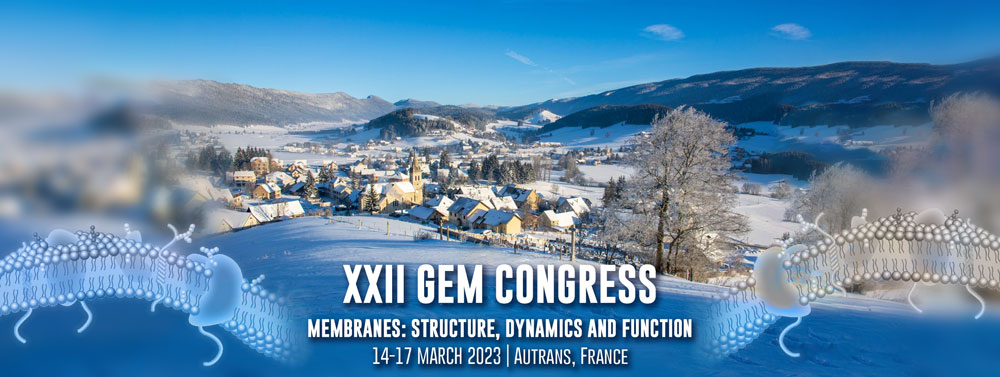Speaker
Description
Membrane fusion plays an important role in several biological processes. Thus, it is essential to explore the mechanism of vesicle fusion. Fusion is frequently induced by SNARE proteins attached to the membrane. These highly complicated proteins can be modelled by coiled-coil complexes (CCs). Typically, CCs are constructed of heptad repeating hydrophobic and polar residues.
To indicate membrane fusion, often the complex of two peptides with EIAALEK (K) and KIAALKE (E) repeating units are conjugated to a cholesterol membrane anchor [1-3]. K peptides have been suggested to prime the membrane for the formation of fusion stalk intermediates by causing small lipid protrusions within the membrane. Two phenomena cause these local perturbances; one is an increase in local positive curvature, the other is caused by membrane dehydration. However, one aspect yet to be improved further is the membrane disruption characteristics of K. We propose that increasing the number of dehydrating amino acids within the K peptide sequence can further increase fusion efficacy. For this purpose arginine residues can be used in the sequence.
In our work, we evaluate in silico a library of arginine modified K peptides and the structural consequences on their ability to form α-helices and a CC complex with the opposing E peptide and their effects on model membranes.
References
[1] N. L. Mora et al., Scientific Reports, 2020, 10, 3087
[2] T. Zheng et al., Chemical Communications, 2013, 49, 3649
[3] G. A. Daudey et al., Chemical Science, 2021, 12 (41), 13782
| Session | Computational methods |
|---|

